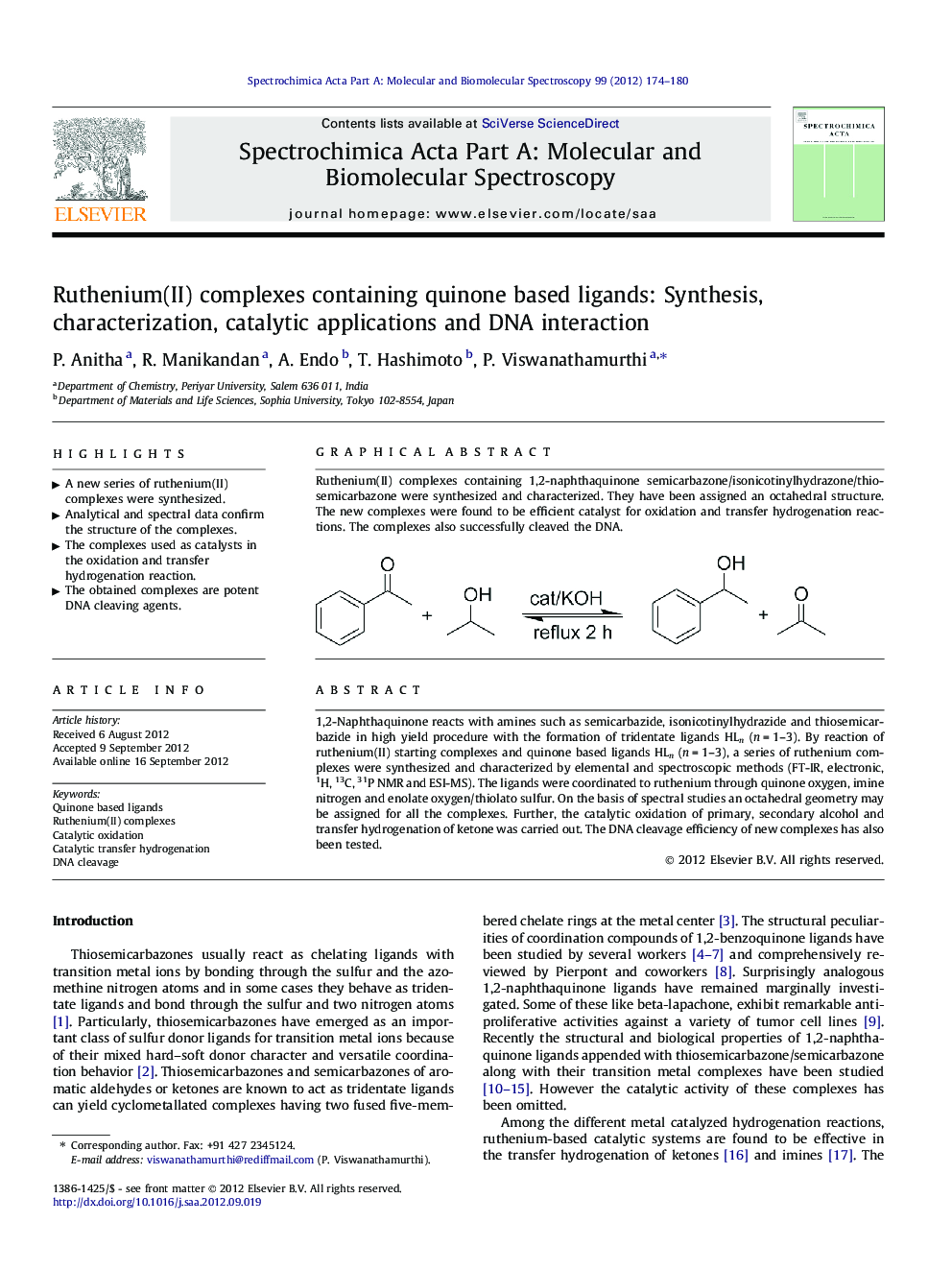| Article ID | Journal | Published Year | Pages | File Type |
|---|---|---|---|---|
| 1235378 | Spectrochimica Acta Part A: Molecular and Biomolecular Spectroscopy | 2012 | 7 Pages |
1,2-Naphthaquinone reacts with amines such as semicarbazide, isonicotinylhydrazide and thiosemicarbazide in high yield procedure with the formation of tridentate ligands HLn (n = 1–3). By reaction of ruthenium(II) starting complexes and quinone based ligands HLn (n = 1–3), a series of ruthenium complexes were synthesized and characterized by elemental and spectroscopic methods (FT-IR, electronic, 1H, 13C, 31P NMR and ESI-MS). The ligands were coordinated to ruthenium through quinone oxygen, imine nitrogen and enolate oxygen/thiolato sulfur. On the basis of spectral studies an octahedral geometry may be assigned for all the complexes. Further, the catalytic oxidation of primary, secondary alcohol and transfer hydrogenation of ketone was carried out. The DNA cleavage efficiency of new complexes has also been tested.
Graphical abstractRuthenium(II) complexes containing 1,2-naphthaquinone semicarbazone/isonicotinylhydrazone/thiosemicarbazone were synthesized and characterized. They have been assigned an octahedral structure. The new complexes were found to be efficient catalyst for oxidation and transfer hydrogenation reactions. The complexes also successfully cleaved the DNA.Figure optionsDownload full-size imageDownload as PowerPoint slideHighlights► A new series of ruthenium(II) complexes were synthesized. ► Analytical and spectral data confirm the structure of the complexes. ► The complexes used as catalysts in the oxidation and transfer hydrogenation reaction. ► The obtained complexes are potent DNA cleaving agents.
